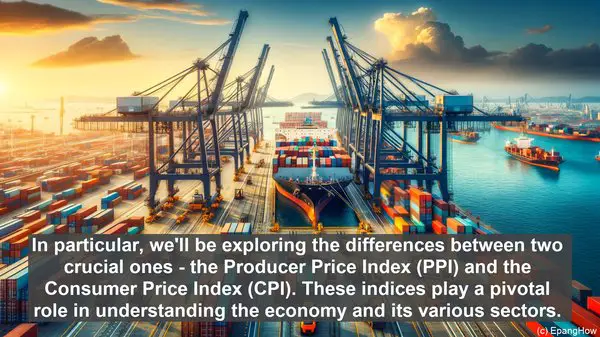Introduction: The World of Price Indices
Hello everyone! Welcome to today’s article, where we delve into the fascinating realm of price indices. In particular, we’ll be exploring the differences between two crucial ones – the Producer Price Index (PPI) and the Consumer Price Index (CPI). These indices play a pivotal role in understanding the economy and its various sectors. So, let’s get started!
Defining the Producer Price Index (PPI)
The Producer Price Index, often referred to as PPI, is a measure of the average change over time in the prices received by domestic producers for their goods and services. It primarily focuses on the prices at the wholesale or producer level. By tracking price movements at this stage, the PPI provides insights into inflationary pressures that may eventually impact consumers.
Unpacking the Consumer Price Index (CPI)
On the other hand, the Consumer Price Index, or CPI, is a measure of the average change over time in the prices paid by urban consumers for a basket of goods and services. This index reflects the prices at the retail or consumer level. It serves as a vital tool for assessing changes in the cost of living and inflation as experienced by everyday individuals.
Key Differences in Scope and Coverage
One of the primary distinctions between the PPI and CPI lies in their scope and coverage. The PPI focuses on goods and services at various stages of production, including raw materials, intermediate goods, and finished products. In contrast, the CPI primarily considers the final retail prices of goods and services consumed by urban households.
Understanding the Weighting Methodology
Another crucial aspect is the weighting methodology employed by these indices. The PPI assigns weights based on the value of production, giving more prominence to higher-value items. In contrast, the CPI assigns weights based on the expenditure patterns of households, reflecting the relative importance of different goods and services in their budgets.

The Significance for Businesses and Investors
For businesses, the PPI is a valuable tool for monitoring cost pressures at the production level. Fluctuations in the PPI can signal changes in input costs, which may impact profit margins. On the other hand, the CPI is of immense interest to investors, as it provides insights into changes in purchasing power and the potential impact on interest rates and bond yields.
Policy Implications and Government Decision-Making
Both the PPI and CPI have significant policy implications. Central banks, for instance, closely monitor these indices to gauge inflationary trends. Government bodies also rely on them for various purposes, such as adjusting social security benefits and setting minimum wage levels. Accurate and timely data from these indices is crucial for informed decision-making.

